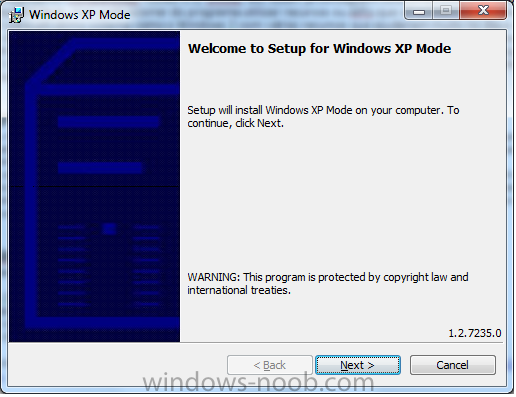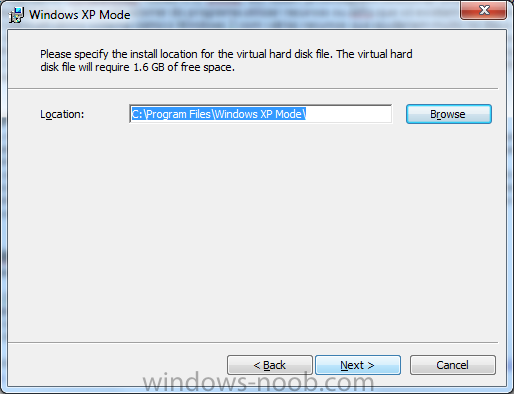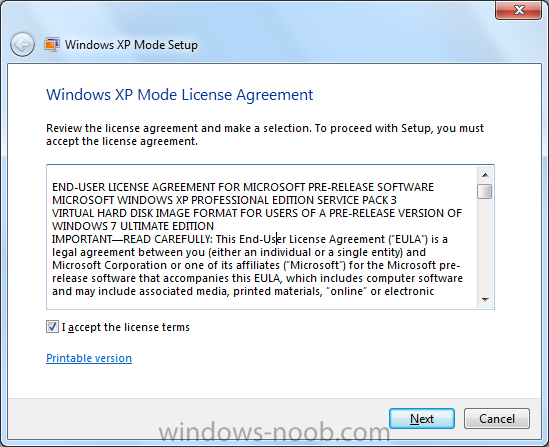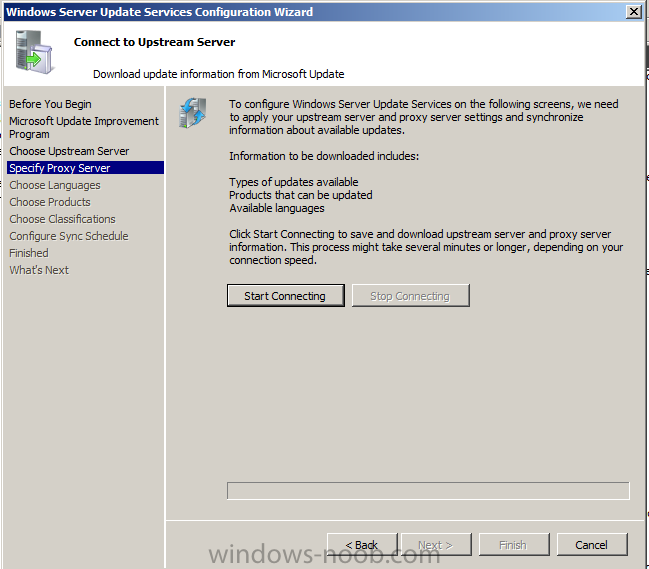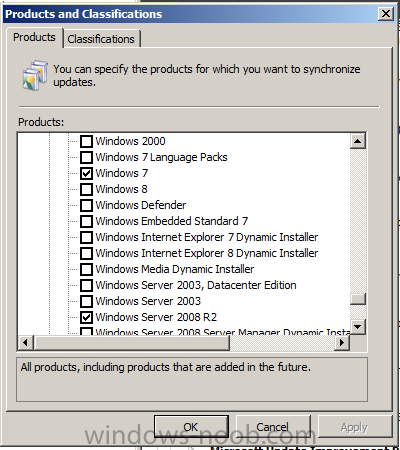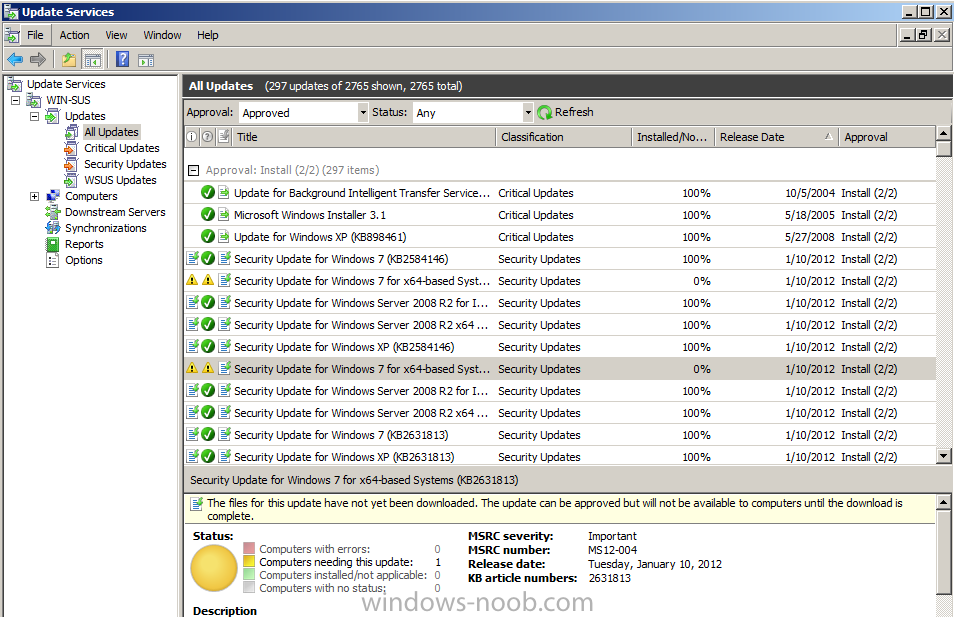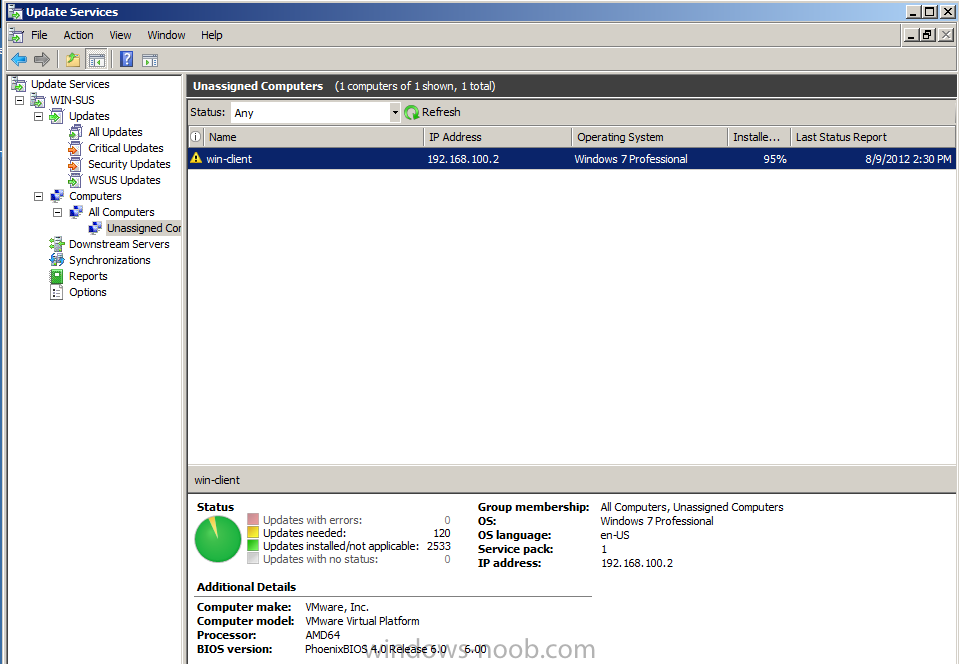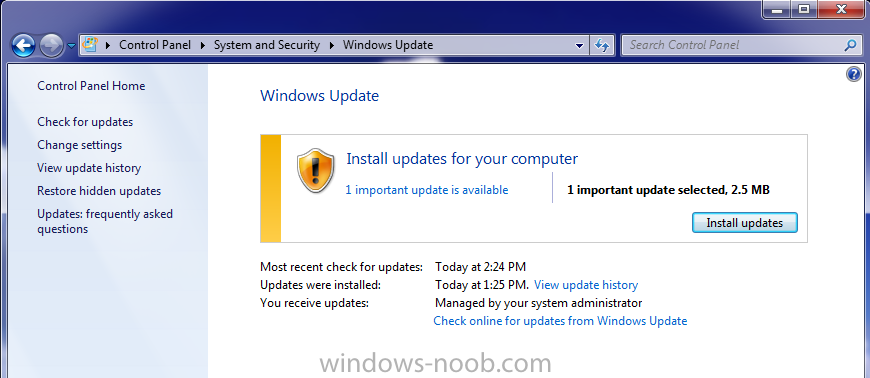-
Posts
117 -
Joined
-
Last visited
-
Days Won
1
Everything posted by Prajwal Desai
-
Hiow to configure Out of Band Management
Prajwal Desai replied to Stijn's topic in Configuration Manager 2012
I had configured the Out of band management in SCCM 2007. Technet instructions should be clear. I shall very soon post the steps to configure the OOB. -
In the WSUS server, under products and classification, have you checked product "System center configuration manager" ? WSUS updates Log files can be found at : \Program Files\Update Services\LogFiles\software distribution.log open it with notepad and try searching the string configuration manager or so...
-
On August 13th 2012, the Exchange CXP team released Update Rollup 4 for Exchange Server 2010 SP2. Download link : http://www.microsoft.com/en-us/download/details.aspx?id=30478 Fixes included in this release: New updates for August DST - Exchange 2010 - SP2 RU4 - Display name for OWA. 2685001 -Retention policies do not work for the Calendar and Tasks folders in an Exchange Server 2010 SP1 environment 2686540- Exchange 2010 Messages are not delivered to Journal Mailbox 2701162 -Granting Full Mailbox Access Does Not Allow Full Details of Free/Busy To Be Displayed 2724188 -Information loss due to unexpected subject modification while copying a message in Outlook 2743871 -Stop Forefront services in RU setup so no manual steps are required 2740358: MS12-058: Vulnerability in Microsoft Exchange Server WebReady document viewing could allow remote code execution: August 14, 2012 via Technet > http://www.microsoft.com/en-us/download/details.aspx?id=30478 Micosoft Support > http://support.microsoft.com/kb/2706690
-
The System Center 2012 Service Pack 1 CTP2 includes updates to System Center 2012 for compatibility with Windows Server 2012 Release Candidate including support for Azure VM and capabilities for Hosted Service Providers. This Community Technology Preview (“CTP2”) enables System Center customers to jointly evaluate System Center 2012 and Windows Server 2012 Release Candidate. CTP2 is for evaluation purposes only and not to be used in production as described in the EULAs associated with the product. No license keys are required to do this evaluation. CTP2 includes updates and enhancements to the following System Center 2012 components: Virtual Machine Manager Improved Support for Network Virtualization Extend the VMM console with Add-ins Support for Windows Standards-Based Storage Management Service, thin provisioning of logical units and discovery of SAS storage Ability to convert VHD to VHDX, use VHDX as base Operating System image Configuration Manager Support for Windows 8 Ability to deploy Windows 8 Apps Real-time administrative actions for Endpoint Protection related tasks Data Protection Manager Improved backup performance of Hyper-V over CSV 2.0 Protection for Hyper-V over remote SMB share Protection for Windows Server 2012 de-duplicated volumes Uninterrupted protection for VM live migration App Controller Service Provider Foundation API to create and operate Virtual Machines Support for Azure VM; migrate VHDs from VMM to Windows Azure, manage from on-premise System Center Operations Manager Support for IIS 8 Monitoring of WCF, MVC and .NET NT services Azure SDK support Orchestrator Support for Integration Packs, including 3rd party Manage VMM self-service User Roles Manage multiple VMM ‘stamps’ (scale units), aggregate results from multiple stamps Integration with App Controller to consume Hosted clouds Service Manager Apply price sheets to VMM clouds Create chargeback reports Pivot by cost center, VMM clouds, Pricesheets Server App-V Support for applications that create scheduled tasks during packaging Create virtual application packages from applications installed remotely on native server The System Center 2012 CTP2 can be downloaded at : http://www.microsoft...s.aspx?id=30133 Technical Documentation for System Center 2012 CTP2 : http://www.microsoft...s.aspx?id=30134. System Requirements: Supported operating systems: Windows 8 Release Preview, Windows Server 2008, Windows Server 2008 R2 The Virtual Machine Manager server for the CTP2 release System Center 2012 SP1 will only run on Windows Server 2012 RC -via Technet > http://www.microsoft.com/en-us/download/details.aspx?id=30133
-
what is the staging quota that you have set ? If you have created a name space, then make sure that the name space can be seen and added in DFS console on both the machines. The folders that you are trying to replicate should not have disk quota enabled on them during replication. Also verify the connection topology once from both the ends.
-

Which Computer is a user logged on to?
Prajwal Desai replied to XPrten's question in Active Directory
yes Psloggedon was one of the tools that i used. Usage: psloggedon [- ] [-l] [-x] [\\computername | username] - Displays the supported options and the units of measurement used for output values. -l Shows only local logons instead of both local and network resource logons. -x Don't show logon times. \\computername -Specifies the name of the computer for which to list logon information. username - If you specify a user name PsLoggedOn searches the network for computers to which that user is logged on. -
The need for windows XP mode comes when a company that wants to migrate its operating system from Windows XP to Windows 7 and is concerned about the software compatibility. There are several methods to make these applications work with Windows 7 as the File and Registry Virtualization, Compatibility Tab, Application Compatibility Toolkit 5.5, Shims, etc but some software need features or APIs that exist in Windows XP only. One of the solution is using the Windows XP mode. Microsoft released Windows XP Mode in late August 2009,which is nothing more than a virtual machine that emulates the applications installed on it to the host using the capabilities of Integration Components (ICs) so that this software is available in a form of easily accessible, transparent and without much difficulty to the user. Windows XP Mode uses the principles of virtualization to create a link between the virtual machine (VM) and Windows host using the Virtual PC. Every application in this case runs on Windows XP and its very easy and simple to use. Windows XP Mode runs many older Windows XP productivity programs and that are not natively compatible with Windows 7, thus helping realize cost savings and reduce possible operational downtime by extending the life of existing software Prerequisites: To use Windows XP Mode you must have the following prerequisites: • Windows 7 (Professional, Ultimate, or Enterprise) • Virtual PC Windows • Windows XP Mode Windows XP mode with Virtual PC can be downloaded at : http://www.microsoft...c/download.aspx Installation: Install Virtual PC first and then run the XP mode setup file. Click on Next Choose the location Click Finish Check I accept and click next You can download windows XP updates by Turning on Automatic Updates. integration features will integrate/share the resources from physical machine to virtual machine. You can see the integrated devices in the XP mode. You can add multiple USB devices in Windows XP mode, which facilitates the installation of a specific program from a pen drive or via Bluetooth device
-
Microsoft Script Explorer for Windows PowerShell -Release Candidate is available for download. It helps scripters find Windows PowerShell scripts, snippets, modules, and how-to guidance in online repositories such as the TechNet Script Center Repository, PoshCode, local or network file systems and Bing Search Repository. After installing the Script explorer you are shown available scripts that are organized by category, and you can search for scripts from local and trusted community repositories by applying filters based on focus areas. Script search results return information about script usage, code samples, and articles about the scripts. When you find the scripts you that you need, you can download and store the scripts and use them at a later time. Script Explorer also allows you to view how-to guidance topics for Windows PowerShell commands and community resources such as TechNet wiki pages to get started with Windows PowerShell. Microsoft Script Explorer enables the following: -Integrated community and Microsoft resources to help you unlock the power of Windows PowerShell. -Seamless searching across online repositories to locate script samples relevant to you. -Establishing and searching local, network, and corporate script repository. Microsoft Script Explorer can be downloaded at : http://www.microsoft.com/en-us/download/details.aspx?id=29101 The installer works on x86 and x64 platforms. System requirements Supported operating systems: Windows 7 Service Pack 1, Windows 8, Windows Server 2008 R2 SP1, Windows Server 2008 Service Pack 2, Windows Server 2012, Windows Vista Service Pack 2 Additional Requirements: Windows PowerShell 2.0/3.0 ISE (Client computer that is to run Script Explorer as an add-on) Microsoft .NET Framework 3.5 Service Pack 1 Microsoft .NET Framework 4 (Standalone Installer) OR Microsoft .NET Framework 4 (Web Installer) User Guide for Script Explorer is available at : http://go.microsoft.com/fwlink/?LinkId=245439 Deployment and Troubleshooting Guide : http://go.microsoft.com/fwlink/?LinkId=245460 -via Microsoft > http://www.microsoft.com/en-us/download/details.aspx?id=29101
-
Yes, the Virtual Machine Servicing Tool 2012 is now available for download. Virtual Machine Servicing Tool 2012 is designed to work with System Center 2012 -Virtual Machine Manager (VMM), System Center 2012 Configuration Manager and Windows Server Update Services (WSUS) 3.0 SP2. VMST 2012 helps you reduce IT costs by making it easier to update your offline virtual machines, templates, and virtual hard disks with the latest operating system and application patches without introducing vulnerabilities into your IT infrastructure. Offline machines, templates, and virtual hard disks do not automatically receive operating system, antivirus, or application updates that would keep them compliant with current IT policy. An out-of-date virtual machine may pose a risk to the IT environment. To ensure that offline virtual machines, templates, and virtual hard disks remain up-to-date and compliant one can make use of Virtual Machine Servicing Tool 2012. Using VMST 2012, you can now service: 1) Offline virtual machines in a SCVMM library. 2) Stopped and saved state virtual machines on a host. 3) Virtual machine templates. 4) Offline virtual hard disks in a SCVMM library by injecting update packages. VSMT2012 can be downloaded at : http://www.microsoft....aspx?id=30470 The Virtual Machine Servicing Tool 2012 includes the following components: Virtual Machine Servicing Tool (msi) Virtual Machine Servicing Tool: Getting Started Guide Virtual Machine Servicing Tool: Release Notes System requirements : Supported operating systems: Windows 7, Windows Server 2008 R2 Microsoft System Center 2012 - Virtual Machine Manager Microsoft Word or Microsoft Word Viewer 2003 (available as a free download) can be used to view Word documents Microsoft Office Compatibility Pack for Word, Excel, and PowerPoint File Formats (available as a free download) can be used to open, edit, and save documents, workbooks, and presentations in the file formats new to Microsoft Office. VSMT 2012 Workflow -via Technet > http://technet.micro...y/jj149757.aspx
-
When you install a Server OS, there is a local administrator account is created. When you promote the server to domain controller, the administrator account will have an unrestricted access to the computer/domain. You can mirror/copy the administrator account and create a new user(for example james), which will have same rights as administrator.So in other words you have 2 administrators, one with account named "Administrator" and other with account named "James".
-
Outlook.com introduced by Microsoft is a new personal email service that reimagines the way that people use email from a cleaner look, to fewer and less obtrusive ads, to new connections to social media sites like Facebook and Twitter. Microsoft’s corporate vice president of Windows Live, Chris Jones said Outlook.com builds off the power of the Outlook people have long used on their PCs and Macs, has a fresh, clean user interface that gets the clutter out of inboxes and takes away display ads and large search boxes, and works well with smartphones, tablets, and the new Outlook 2013 Preview. Outlook has clean user interface and there are no display ads or large search boxes that take up extra space. Outlook.com also uses Exchange ActiveSync, so it powers your mail, calendar and people experience on your smartphone, tablet, and the new Outlook 2013 Preview. In the Outlook.com inbox, your personal email comes alive with photos of your friends, recent status updates and Tweets that your friend has shared with you, the ability to chat and video call. Getting Started at Outlook.com If you're a Hotmail customer and want to upgrade to the Outlook.com preview, just click "Upgrade" in the options menu of Hotmail. Your email address, password, contacts, old email, and rules will remain unchanged, and you can send/receive email from your @hotmail.com or @msn.com or @live.com address.If you have a Microsoft account, just log in and get started. If you don't, it's easy to create a new account with an @Outlook.com email address. In case you don't like the outlook.com preview there is an option to switch back to hotmail. Features : 1) Outlook.com supports the slideshow support for emails containing Photos. 2) Chat option with friends who are using Facebook Chat or Outlook. 3) Outlook.com offers the ability to open, edit and share Word, Excel and PowerPoint web apps built in with 7 GB of free cloud storage. 4) Skype will be coming to Outlook.com soon, so people can video call Skype or Outlook friends, even if neither have the Skype client installed. 5) Outlook gives you virtually unlimited storage and less spam—and works on your PC, Mac, phone, and tablet. 6) Outlook is modern which means you get a fresh, clean design that’s intuitive to use. The latest contact info that friends share on Facebook and LinkedIn is integrated into Outlook.com. -via Microsoft News Center - http://www.microsoft...Outlookcom.aspx Outlook Blog - http://blogs.office....-mailboxes.aspx
-
Pulse, an elegant news reading application originally designed for mobile devices, and now available on the Web. Pulse incorporates colorful panning story bars and fills them with content from sources you select. Today more than 15 million people around the world use the Pulse app on every major mobile platform, including Windows Phone. The app has grown to offer content from virtually every major U.S. publisher and a growing list of international ones. Its visual style and simple navigation have garnered praise from consumers and the press alike, and it has earned numerous awards for its design. The pulse app is developed by Akshay Kothari and Ankit Gupta. Apart from the striking new design, Akshay Kothari and Ankit Gupta's concern was to deliver speed and performance on the Web .Internet Explorer 10 allowed them to do that with HTML5 and advanced touch support coupled with hardware acceleration enabled through Windows. The result, they say, is something that may just change the way people think about building applications for the Web. Features of Pulse : 1) Impressive touch gestures with Internet Explorer 10 on a touch device running windows 8 release preview. 2) The app works with Internet Explorer 10 with a very good speed and performance. Pulse for the Web is available at http://www.pulse.me. Web enthusiasts who would like to try it out with Internet Explorer 10 can download the Windows 8 Release Preview. Windows 8 with Internet Explorer 10 is scheduled to be commercially available in stores Oct. 26. -via Microsoft News - > http://www.microsoft...9PulseIE10.aspx
-
Windows Server Update Services (WSUS) enables administrators to manage the distribution of updates and hotfixes released for Microsoft products to computers in a corporate environment. WSUS downloads these updates from the Microsoft Update website and then distributes them to computers on a network. In this Article i will be installing the WSUS role on a computer that is in Workgroup environment. Machines used . 1 VM - Server 2008 R2 ent 64 bit - WSUS role installed and configured. 1 VM - windows 7 prof SP1 64 bit as client machine. Step 1 - Install and Configure the WSUS role on the server. Step 2 : Create the .reg file with following info: Create a *.reg file containing this: [HKEY_LOCAL_MACHINE\SOFTWARE\Policies\Microsoft\Windows\WindowsUpdate] "AcceptTrustedPublisherCerts"=dword:00000001 "ElevateNonAdmins"=dword:00000001 "TargetGroupEnabled"=dword:00000000 "WUServer"="http://your-WSUS-server:port"; "WUStatusServer"="http://your-WSUS-server:port"; [HKEY_LOCAL_MACHINE\SOFTWARE\Policies\Microsoft\Windows\WindowsUpdate\AU] "AUOptions"=dword:00000004 "AUPowerManagement"=dword:00000001 "AutoInstallMinorUpdates"=dword:00000001 "DetectionFrequency"=dword:0000000a "DetectionFrequencyEnabled"=dword:00000001 "IncludeRecommendedUpdates"=dword:00000001 "NoAUAsDefaultShutdownOption"=dword:00000001 "NoAUShutdownOption"=dword:00000001 "NoAutoRebootWithLoggedOnUsers"=dword:00000001 "NoAutoUpdate"=dword:00000000 "RebootRelaunchTimeout"=dword:0000000a "RebootRelaunchTimeoutEnabled"=dword:00000001 "RescheduleWaitTime"=dword:0000000a "RescheduleWaitTimeEnabled"=dword:00000001 "ScheduledInstallDay"=dword:00000000 "ScheduledInstallTime"=dword:00000003 "UseWUServer"=dword:00000001 Change/Modify the info from reg file. - "WUServer"="http://your-WSUS-server:port"; and - "WUStatusServer"="http://your-WSUS-server:port"; Example : "WUServer"="http://192.168.100.1" "WUStatusServer"=http://192.168.100.1" Example : "WUServer"=" http://intranet.local:8080 " "WUStatusServer"=" http://intranet.local:8080 " Save the reg file with filename.reg extension Step 3 : In the WSUS console Approve the updates.
-
Windows Server 2012 Installation Options IT pros can now convert a server from and to Server Core and change the availability of server components that are previously committed at an installation time. To convert an installation from Server with GUI to Server Core, run the following PowerShell command Uninstall-WindowsFeature Server-Gui-Mgmt-Infra -Restart To convert an installation from Server Core to Server GUI, run the following PowerShell command Install-WindowsFeature Server-Gui-Shell -Restart For more information, Click the below link. http://blogs.technet...=zBLz∏=zWSz
-
- 1
-

-
To prevent executing files from USB drive you can disable the USB ports through group policy. To Prevent users downloading files from IE, open IE > on the menu bar click on tools > Internet Options > Security > Internet > custom level > Look for file download option and choose the disable option. I need to do some research if only .exe file can be blocked through IE.
-

how can I disable Windows firewall via Group Policy
Prajwal Desai replied to anyweb's question in Group Policy
Try disabling the firewall manually in the client, do a push installation and check if its working. This would actually tell us if firewall is the actual issue or not. -

Determine the exact postition of an desktop icon?
Prajwal Desai replied to japijap's question in Deploy software, applications and drivers
Right click on desktop, point to view > uncheck "Auto arrange icons". -
Use the below link which shows how to manager WSUS using command line. I have gone through the link once, there is a movecontent command which can be helpful to you.. http://technet.microsoft.com/en-us/library/cc720466(v=ws.10).aspx
-
if you are specific about the products that need the updates then create a auto approval rule only for that product. I suggest you to do a client side targeting so that updates are applied to proper groups.
-
If the package already exists and if its updates are available, then it downloads only the updates.
-
@Malik4u - You can use SCCM or WSUS to deploy the windows updates to the client machines. The above guide is required when you use WSUS and it shows how Group policy settings are configured and applied to the client machines. If you wish to use SCCM to deploy the windows updates, click on the link : http://www.windows-noob.com/forums/index.php?/topic/1064-sccm-2007-guides/ Read the posts under the topic : Deploying Windows Updates using SCCM
-
Connect an external storage, copy the WSUS folder to the external storage and then delete the folder from actual drive. Have you selected all the product updates ?
-
even i am interested .. Let me know if i can be a News poster, i visit this site daily and atleast twice..



